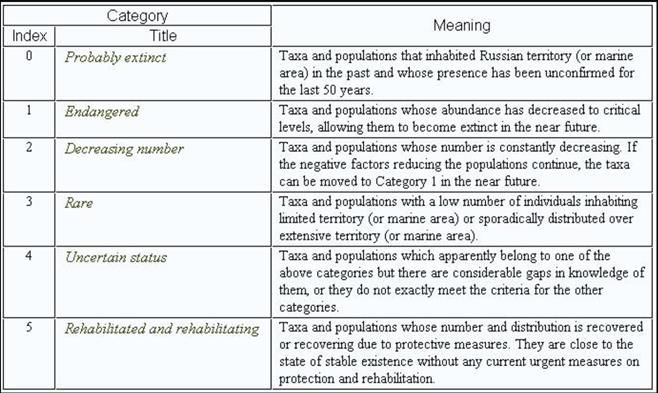
PUMPA - SMART LEARNING
எங்கள் ஆசிரியர்களுடன் 1-ஆன்-1 ஆலோசனை நேரத்தைப் பெறுங்கள். டாப்பர் ஆவதற்கு நாங்கள் பயிற்சி அளிப்போம்
Book Free DemoThe Red datebook is a file or sourcebook for recording rare and endangered species - animals, plants and fungi.
Local sub-species present within the territory of a state or country are recorded in the red data book. It gives important data for observational studies and monitoring programmes on habits and habitats of rare and endangered species.
It is created to identify and protect species about to be extinct. The book classifies species into 3 categories - threatened, not threatened, and unknown. The book has information on why the species has become extinct and population trends and distribution.

IUCN Red data list
Red data book contains colour-coded information sheets like black for extinct species, red for endangered species etc. The book is arranged according to the extinction risk of species and subspecies.

Category and the meanings of the titles
Red Data Book of India
India is a highly diverse country with only 2.4 \% of the world’s land area. It accounts for 7 - 8 \% of all recorded species, including over 45,000 species of plants and 91,000 species of animals. India has diverse physical features and climatic conditions that result in various ecosystems such as forests, wetlands, grasslands, deserts, coastal and marine ecosystems that harbour and sustain high biodiversity and contribute to human well-being.
Example:
Some of the endangered animal species present in the Red data book of India include flying squirrel, blackbuck, Indian giant squirrel, snow leopard, one-horned rhinoceros, Himalayan musk deer, Himalayan brown/red bear, Red panda etc.
Four out of 34 globally identified biodiversity hotspots, the Himalayas, the Western Ghats, the North-East, and the Nicobar Islands, can be found in India. India became a State Member of IUCN in 1969 through the Ministry of Environment, Forest and Climate Change (MoEFCC).
The IUCN India country office was established in 2007 in New Delhi. Red Data Book of India
contains the conservation status of animals and plants found in the Indian subcontinent. The book's data is provided through surveys conducted by the Zoological Survey of India and the Botanical Survey of India under MoEFCC.
contains the conservation status of animals and plants found in the Indian subcontinent. The book's data is provided through surveys conducted by the Zoological Survey of India and the Botanical Survey of India under MoEFCC.
Advantages of Red data book:
1. Helps to evaluate the population of particular species.
2. Data available in the book is used to evaluate the species at the global level.
3. It helps to identify all the animals, birds and other species about the conservation status.
4. With the book's help, the risk of a species that becomes globally extinct can be estimated.
5. The book provides a framework or guidelines for implementing protective measures for endangered species.
Disadvantages of Red data book:
1. Information available in the book is incomplete. Many species, both extinct and endangered, are not updated in this book.
2. Source of the book's data has been hypothesised or speculated.
3. The book maintains a complete record of all animals, plants and other species. However, it does not have information on the microorganisms.
Reference:
https://upload.wikimedia.org/wikipedia/commons/3/36/IUCN_Kategorien_Rote_Liste.svg
https://upload.wikimedia.org/wikipedia/commons/d/d1/Reddatabooktable.JPG